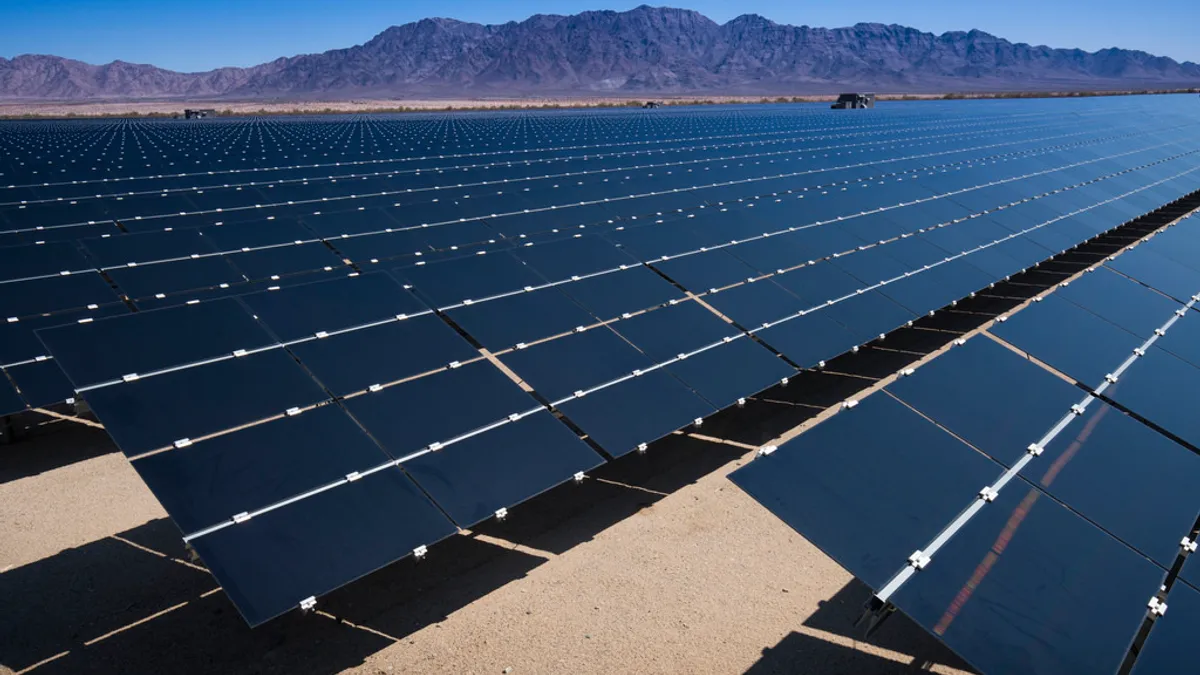Dive Brief:
- The U.S. solar market has shaken off the impacts of President Trump's 30% tariff on panel imports, with home installations steady and utility procurement seeing a "massive rebound," according to research from Wood Mackenzie Power & Renewables and the Solar Energy Industries Association (SEIA).
- The outlook is particularly strong on the utility side, according to the report, which predicts deployment will accelerate in the second half of 2018. Utilities procured 8.5 GW in the first six months of the year, a record for that timeframe.
- The residential solar market contracted about 15% in the last year, and analysts say the relatively flat recent numbers are a positive sign. The residential market saw 577 MW installed in the second quarter of 2018, marking three quarters of consecutive, albeit modest, growth.
Dive Insight:
There were 2.3 GW of solar PV installed during the second quarter of 2018, marking a small decline in annual and quarterly comparisons. But coming just after a pullback on the residential side, SEIA and Wood Mackenzie concluded it is a good indicator, and the overall picture is strong.
Second quarter installation numbers represented a 9% year-over-year decrease and a 7% quarter-over-quarter decrease, which the report called "an encouraging sign of market stabilization after a year in which the market contracted 15%."
But the optimism is rooted in more than not-so-bad residential numbers. Even in a challenging environment, solar accounted for nearly 30% of new electricity generating capacity additions in the United States.
Utility projects make up the largest share of annual installations in the U.S. solar market, and the second quarter of 2018 was the 11th consecutive quarter with over 1 GW installed. But the most impressive and telling number may be found in utility plans.
Some 1.2 GW went online from April through June, and 2.7 GW are now under construction and targeted for completion later this year. The tariffs were announced in January, and since then, utility procurement has been particularly strong. According to SEIA and Wood Mackenzie, some projects which had been delayed were green-lighted when the tariffs were set lower than had been anticipated.
"Procurement of U.S. utility solar has exploded over the first half of 2018," the report says. And the total includes more than two dozen projects that are 100 MW or larger, some of which had been put on hold due to tariff uncertainty.
"As we move toward 2019, we expect to see continued procurement growth as developers look to secure projects they can bring online before the federal Investment Tax Credit steps down to 10% in 2022," the report predicts.
The White House's solar tariffs will decline in 5% increments over a four-year span, ending at 15% by 2022.














